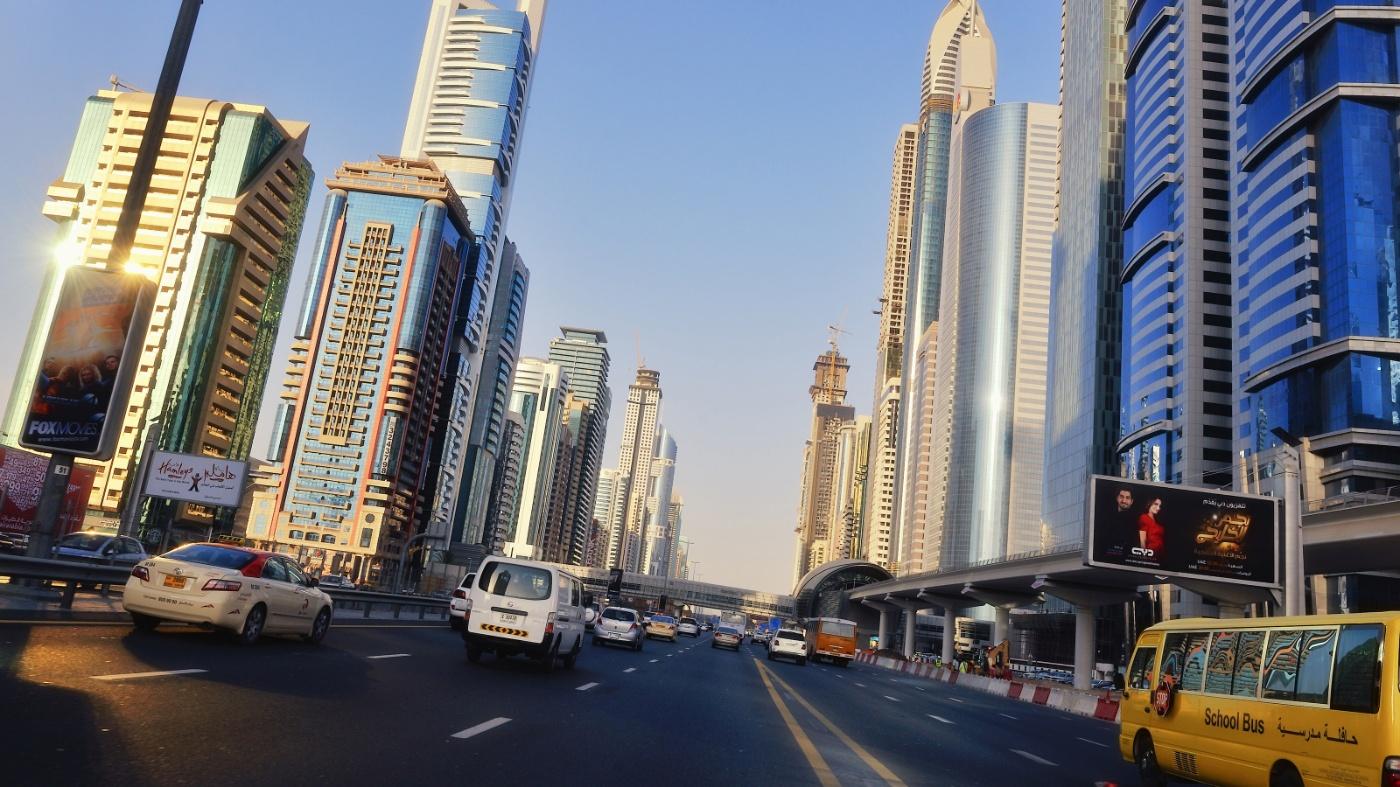Autonomous driving in Abu Dhabi
Lidar, radar, cameras, 4-D radar – which technology is the best if autonomous driving is to become something everyone can use? Lidar is the answer for Bayanat, the geo-information services provider based in the United Arab Emirates. Bayanat operates taxis that transport passengers autonomously around Abu Dhabi. Come with IAA MOBILITY Visionary Club to a city with an ultramodern skyline and buildings from the Thousand and One Nights – and meet pioneers and trailblazers for fully autonomous driving. Sponsored by Bayanat.
As you get into the taxi, the first surprise awaits: “Hey, there’s someone here! I thought it was a self-driving taxi!” Sarah Harman from the IAA MOBILITY Visionary Club sits in the back of the TXAI vehicle. The taxi service with self-driving cars belongs to Bayanat. The company, based in the United Arab Emirates, is a leader in the fields of geo-data intelligence, data analysis and AI (artificial intelligence). On the way to the Yas Marina Circuit, Sarah experiences a ride in a self-driving vehicle – and we’re traveling with her.
A person at the steering wheel: just as a safety precaution, but not needed
It turns out the ostensible chauffeur is a security officer, who is only riding along to oversee things. So Sarah asks: “Can you take your hands off the steering wheel, please? I’d like to experience fully autonomous driving!” The security officer relaxedly places his hands, palms up, on his knees – but remains ready at all times to intervene. However, it’s not necessary at all. The steering wheel turns as if controlled by magic, while the taxi drives around the bend and into Abu Dhabi’s Formula 1 Yas Marina Circuit.
Hasan Al Hosani, CEO of Bayanat, is waiting there in front of the empty stands that can accommodate over 40,000 spectators. “We have successfully completed Test Phase 1,” he says. “It exceeded our expectations” In November and December 2021, the first test phase using autonomous taxis was conducted on Yas Island in Abu Dhabi – “with five vehicles and nine stops”, explains Al Hosani. Ikea, Yas Beach, Yas Mall, Yas Marina, W Hotel, Warner Bros Abu Dhabi, Etihad Arena, Ferrari World and the Water Park were the destinations passengers could be driven to. The total loop was 20 km long. In all, more than 16,600 kilometers were covered as autonomous driving.
The success is a joint achievement: In addition to the necessary cooperation with the authorities, Bayanat was collaborating with WeRide. Working with the autonomous driving technologies developer, an advanced full-stack software came about, along with hardware solutions and operating and monitoring systems for the TXAI app. Bayanat itself developed a simulation system, the operating system, the Big Data platform, and a monitoring system for the vehicles, based on an ultra-modern algorithm for autonomous driving. The second test phase is similarly set to begin in 2022. This time, more cars and even minibuses are set to be included – and deployed in a bigger area.
Futuristic and fantastic
And which is the technology Bayanat has opted for? “Lidar”, says Al Hosani, because that technology “guarantees greater safety for passengers, and ensures that the car can be completely self-driving at Level 4”. Level 4 means: The vehicle navigates the vast majority of the trip without human intervention. It can even cope with highly complex traffic situations such as unexpected roadworks. However, a person needs to be able to intervene by steering, if necessary.
Our trip continues – over generously-laid out roads in one of the most modern cities in the world. Here, futuristically-shaped skyscrapers with glass façades alternate with fantastical buildings from the Thousand and One Nights with onion domes and windows with Oriental patterns. In the shops and bazaars, visitors are bewitched by the smells of tea and spices.
A challenge facing everyone worldwide
On a square with the Sheikh Zayed Grand Mosque in the distance, Sarah meets up with Abdulla Al Shamsi, COO of Bayanat. How have people in Abu Dhabi accepted TXAI, Sarah wants to know. How do they react when they see a self-driving taxi on Yas Island? “The number of orders has almost doubled,” says Al Shamsi. “Everyone is very interested in trying out the new technology.” Close on 3,000 passengers used the taxi service, comprising battery electric and hybrid vehicles, during the first test phase.
However, it is true of TXAI too that no innovation establishes itself entirely without resistance. What was the biggest challenge for the taxi project? “Regulation”, Al Shamsi promptly replies. “But I think that is a global challenge everyone encounters.”
